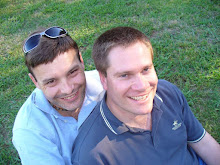
Greater London has more than 13,600km of roads, streets and laneways within in its boundaries. Their layout is largely a product of local history which means they typically twist and turn, merging and intersecting without logic. The result is a driver’s nightmare, making an AtoZ street directory one of our first purchases in London. Every English home has one.
These directories were the brain child of Phyllis Pearsall. Her first edition, published in 1936, catalogued 23,000 streets. Her first print run consisted of only 10,000 copies. Today, new editions appear annually in more than 120 formats. Incredibly, Phyllis remained involved with the cartography company she founded until her death in August 1996 at the age of 89.
However, even with an AtoZ in hand, navigating London’s streets remains a headache. More than once Garry and I have almost come to blows using an toZ to cross vast tracts of London. Entire pages take on the appearance of a mind-numbing printed maze. Streets come and go in rapid succession before you’ve time to comprehend their location and relationship to nearby roads.
These exasperating map experiences have left me in awe of London’s taxi drivers. All licensed taxi drivers must have an in depth knowledge of the city’s streets. Within a six mile radius of Charing Cross they must be able to find their way through 320 routes, or runs, that form part of their road test. They are also expected to know key places of interest, important landmarks and other local features along the way.
On average it takes between two and four years to pass this ‘Knowledge’ test. The end result is truly impressive. No matter where you are, you can simply climb into a cab and name your destination. The cabbie will know exactly where to go. In fact, he’ll even clarify your request if there’s more than one street with the same or similar name in more than one suburb. It sure beats thumbing through an AtoZ.
Despite their random topography, London’s streets are remarkably well sign-posted. Each is labeled with an enamelled white steel plate, printed with the name in bold, black lettering. The original design was created more than forty years ago by Sir Misha Black. Since 1967 the font and design have been protected by copyright. Westminster Council currently owns the rights and actively reinforces them, prosecuting counterfeiters and cheats who reproduce souvenirs without authorization.
The signs themselves are also popular souvenirs. Westminster Council is perpetually replacing signs that mark popular tourist destinations, including one in our neighbourhood. Abbey Road street signs are regularly stolen by Beatles fans keen to capture their own piece of pop memorabilia. In desperation the council has resorted to mounting replacement signs high up on local houses.

























































